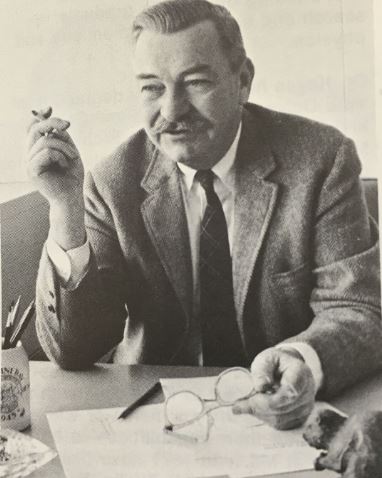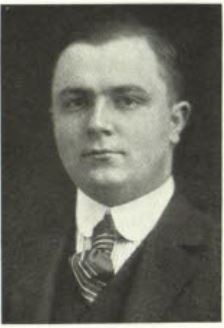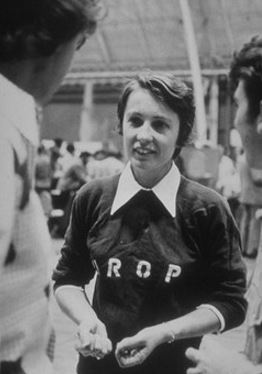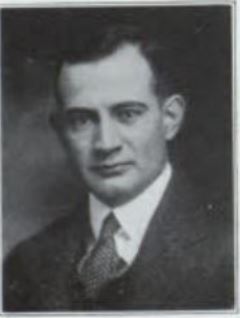Profiles in Alumni Leadership
-
-
slice.mit.edu
Filed Under
Recommended
 Henry B. Kane '24
Henry B. Kane '24
Henry Kane started his MIT career in the sciences as an engineer, but ended in the arts as an illustrator. Kane was prolific artist, illustrating dozens of books and writing a few of his own, mostly on the subjects of flora and fauna. For MIT, Kane’s illustrations and cartoons appeared in countless issues of Technology Review, yearbooks, on Alumni Day steins, and in Alumni Fund letters. Kane wrote and illustrated his own MIT-themed book MIT in the Twenties, which highlighted life at MIT’s new campus in Cambridge and even some of MIT students first hacks and pranks. Kane may have gotten early practice for his cartoons in his four years at Voodoo, MIT’s satire magazine.
Aside from illustrating, Kane was dedicated to his more serious roles at MIT, returning to MIT first as the administrative assistant to President Karl Compton, and eventually working up to head of Alumni Fund. When Kane was head of the Alumni Fund, he joked that just he and his secretary made up the entire Fund—a statement that was true at the time. With just a two-person team, Kane worked hard to elevate the fund from its inception to become the fifth largest in the US.
 Harold Lobdell '17
Harold Lobdell '17
Harold Lobdell is synonymous with campus as students often dine in “Lobdell” in W20. But Lobdell’s impact at MIT began during his time as student, when he was manager of The Tech. Away from the Institute, Lobdell was a second infantry lieutenant in World War I. Some years later, he would return to MIT to continue his journalistic influence as editor of Technology Review. Lobdell then advanced through MIT working for the Endowment Fund Campaign and as Assistant Dean and later Dean of Undergraduate Education and Student Affairs beginning in 1930. Completing his leadership in all facets of Institute life, Lobdell became Executive Vice President of the Alumni Association. This type of collegiate leadership may have been in his blood—his ancestor Abraham Pierson was a founder of Yale. In total, Lobdell gave MIT 42 years of service.
In his spare time, Lobdell was an avid philatelist—even authoring a book on the subject, Hong Kong and the Treaty Ports, Postal History and Postal Markings and earning membership in the Royal Philatelic Society of London.
 Margaret MacVicar '65, ScD '67
Margaret MacVicar '65, ScD '67
Margaret MacVicar has a place in personal memories for many MIT alumni. In many of these memories she is known as Scotty, her longtime nickname. A graduate of the class of 1965, completing her Doctor of Science in 1967, MacVicar made great impact in her 30 years at MIT. MacVicar became a professor at MIT at the age of 26. While working as a professor in MIT’s Department of Physics, MacVicar launched what would become known as MIT’s Undergraduate Research Opportunities Program (UROP). MacVicar’s one-time roommate Harriet Fell ’65, PhD ’69 explains that MacVicar’s personal curiosity was what led to the creation of UROP. “She would barge into people’s offices on campus and ask them what they were working on,” Fell recalls. To this day, UROP gives MIT students—nearly 90 percent of them —the opportunity to conduct research in hundreds of labs across campus.
MacVicar would go on to become the Dean of Undergraduate Education in 1985. According to friend and MIT Corporation Member Dr. Edie Goldenberg ’67, MacVicar looked at each student as a “irreplaceable asset.” To that end, she worked to broaden the experience of MIT students. She placed a new focus on humanities at MIT-- students were first given the opportunity to minor in nontechnical fields under MacVicar's tenure. MacVicar’ s legacy also lives on in the MacVicar Faculty Fellows, a fellowship that recognizes “MIT faculty who have made exemplary and sustained contributions to the teaching and education of undergraduates at the Institute.”
 George Morgan '20
George Morgan '20
George Morgan exists in lore for MIT’s many Educational Counselors who are treated to tales of the alumnus during training. As one of the very first ECs, Morgan’s work with MIT is well-documented—he was the chair for Texas for many years—but his tactics are more mythical. MIT President Emeritus, Paul Gray ’54, SM ’55, ScD ‘60 recalls that Morgan used to thrill—or terrify—students and those from MIT by driving them around East Texas in his Cadillac at speeds of 80-90 miles per hour, all while looking at his passenger and carrying on a full conversation. Morgan was never more excited than when he found a “good, smart kid” that he thought would be a great fit for MIT. Remembered as “determined and opinionated” Morgan was truly dedicated to MIT.
Born and raised in Texas, Morgan transferred to MIT from Texas A&M. He returned to his home state after MIT, where he attended each and every meeting of the Club of South Texas.
Join us at MIT ALC September 23-24, 2016 for behind-the-scenes updates from Institute leaders, keynote presentations from MIT faculty and students, and nearly 50 best-practice sessions and brainstorming discussions from MIT alumni and staff.







